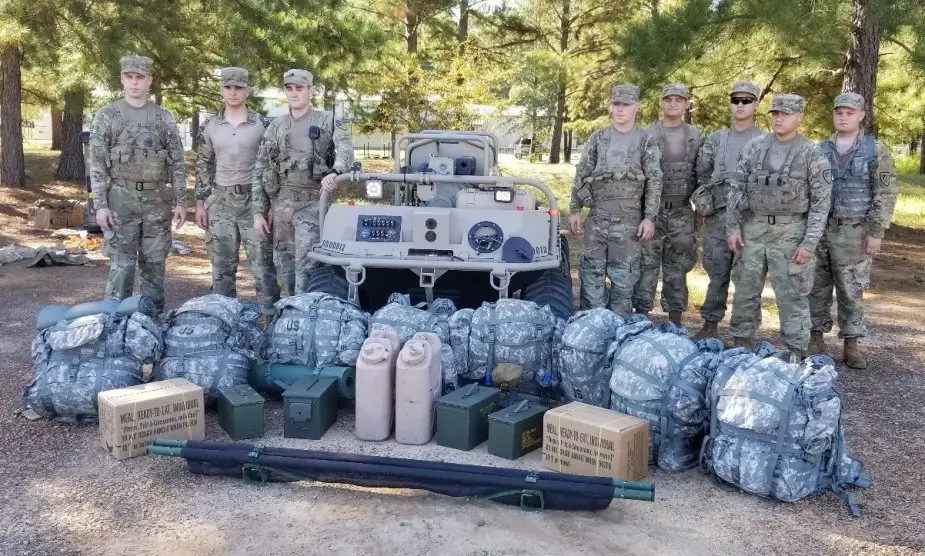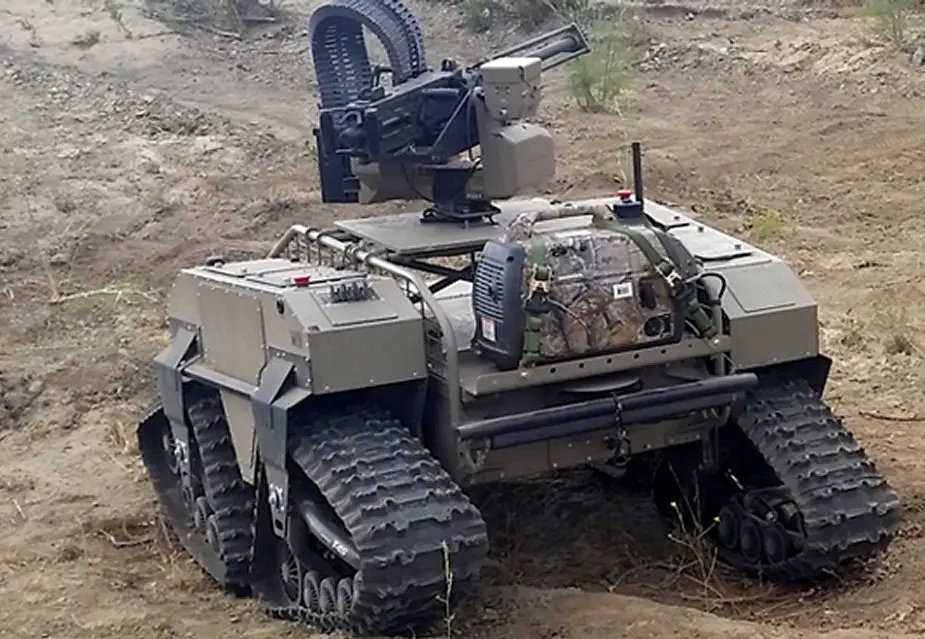General Dynamics Land Systems was awarded a $249,000,000 hybrid (cost-no-fee, cost-plus-fixed-fee, firm-fixed price) contract for Increment I of the Small Multipurpose Equipment Transport. Bids were solicited via the internet with three received. Work locations and funding will be determined with each order, with an estimated completion date of July 14, 2025. U.S. Army Contracting Command, Detroit Arsenal, Michigan, is the contracting activity.
Follow Army Recognition on Google News at this link

U.S. soldiers assigned to the Maneuver Battle Lab Experimental Force, Fort Benning, Ga., pictured here, played a central role in assessing the S-MET candidates during the Technology Demonstration phase as well as Tactics, Techniques, and Procedures Development. Soldiers from the 10th Mountain and 101st Airborne Divisions also utilized the systems during the seven-month Technology Demonstration, incorporating the S-MET systems into Field Training Exercises and a four-week rotation at the Joint Readiness Training Center at Fort Polk, La. (Picture source: Jay Richards, Program Executive Office for Combat Support Combat Service Support)
The S-MET program aims at lightening Soldiers’ loads by providing Infantry Battalions a robotic “mule” capability, and a power generation capability to offload power for charging batteries and powering additional Modular Mission Payloads, to increase combat effectiveness while operating in austere environments for extended periods. A phased, rapid acquisition plan allowed the Army to make informed program decisions from Soldier feedback on commercially available technology – fielding faster than typical processes allow.
Important insights from Soldier interaction with the candidate S-MET systems during a phased acquisition process made important contributions to shaping Tactics, Techniques and Procedures, concept of operations, and source selection.
The S-MET will modernize the Army’s inventory of robots to provide IBCTs a robotic “mule” capability. The S-MET provides the capability to generate offload power for charging batteries and powering additional Modular Mission Payloads, and conduct unconstrained movement without excessive physical burden while operating as a dispersed and decentralized force in austere environments for extended periods. By unburdening Soldiers, S-MET will enable IBCTs to travel greater distances and carry more, and in so doing, improving Soldiers’ physical and cognitive capabilities.
S-MET’s basic operational capabilities include:
* Unmanned/optionally manned system
* Carries 1,000 lbs., reducing the dismounted soldier’s weight burden by 100-plus pounds each
* Operates 60-plus miles in 72 hours
* Generates 3 kilowatts of power (stationary) and 1 kilowatt (moving,) keeping equipment and batteries charged on the move.
The S-MET program marks one of the Army’s first Middle Tier Acquisitions for Rapid Fielding. This acquisition approach foregoes the traditional Department of Defense 5000.02 acquisition process, streamlining the delivery and fielding of capabilities within a period of five years. The S-MET program’s FAR-based solicitation was released on July 29, 2019, and the Army awarded the S-MET production contract, which was announced on Oct. 30, 2019.
Based on the current funding profile and fielding schedule, the Army plans to field S-MET in the second quarter of Fiscal Year 2021 and complete fielding of 624 S-METs by the second quarter of Fiscal Year 2024. The Army will continue to refine S-MET requirements based on a 12-month Doctrine, Organization, Training, Materiel, Leadership and Education, Personnel, Facilities and Policy (DOTMLPF-P) analysis. Modular Mission Payloads will be developed and integrated into the S-MET Increment I platforms to increase system capability. Data collected during the DOTMLPF-P analysis and MMP integration will inform requirements for the full Capability Development Document (CDD) prior to the Fiscal Year 2022 Army Requirements Oversight Council (AROC) and competitive re-compete of S-MET Increment II.
GDLS Multi-Utility Tactical Transport (MUTT)
The MUTT is a rugged, reliable small-unit force multiplier providing increased persistence, protection and projection. As a controllerless small-unit robotic follower, it lightens the load throughout the full gamut of combat operations. As a remote-controlled or teleoperated teammate, it provides stand-off from threats or increased projection of combat power. The MUTT is engineered to easily evolve to accommodate new payloads, new controllers and increased levels of autonomy. MUTT provides MUM-T 1.0 capability today.
4X4 tracked/wheeled
Payload (lbs): 600. GVW (lbs): 1450/1700. Length (in): 66/84. Width (in): 54/60. Max Range (mi) (GENSET +5gal): 60/36. Amphibious: Yes/No. Export Power (W): 1500. Tether Control: Yes. Remote Control: 200m LOS. Tele-Operation: Operational. Semi-Autonomy: Optional.
6X6 tracked/wheeled
Payload (lbs): 900. GVW (lbs): 2300/2700. Length (in): 93. Width (in): 60/70. Max Range (mi) (GENSET +5gal): 60/36. Amphibious: Yes/No. Export Power (W): 3000. Tether Control: Yes. Remote Control: 200m LOS. Tele-Operation: Operational. Semi-Autonomy: Optional.
8X8 tracked/wheeled
Payload (lbs): 1200. GVW (lbs): 3000/3500. Length (in): 116. Width (in): 60/70. Max Range (mi) GENSET +5gal): 60/36. Amphibious: Yes/No. Export Power (W): 3000. Tether Control: Yes. Remote control: 200m LOS. Tele-Operation: Operational. Semi-Autonomy: Optional.

GDLS MUTT 4x4 in tracked and armed configuration (Picture source: GDLS)
















